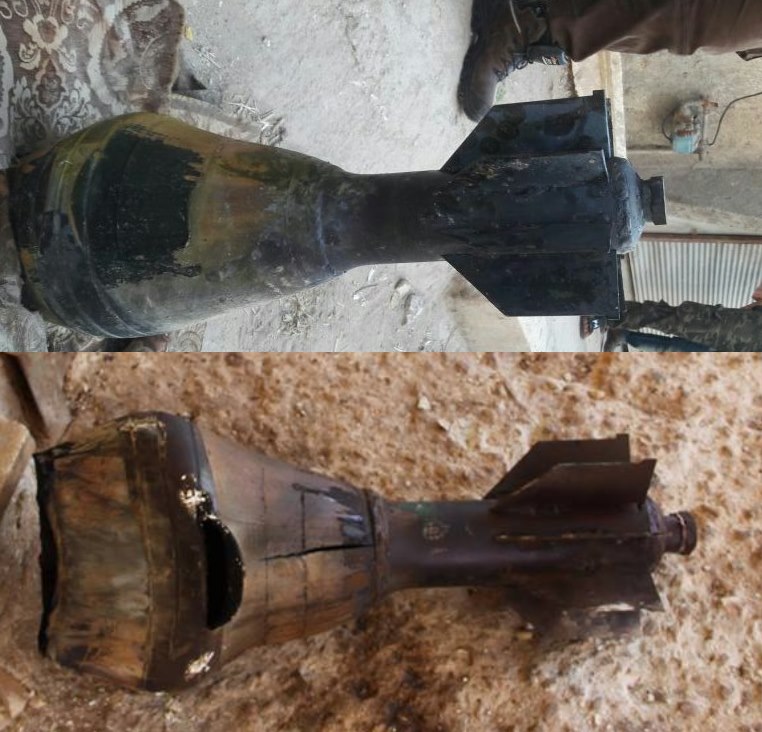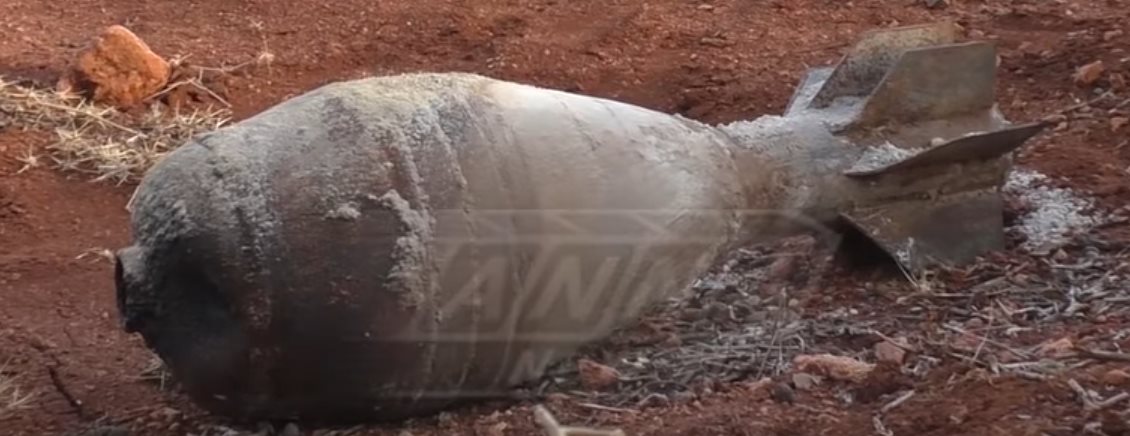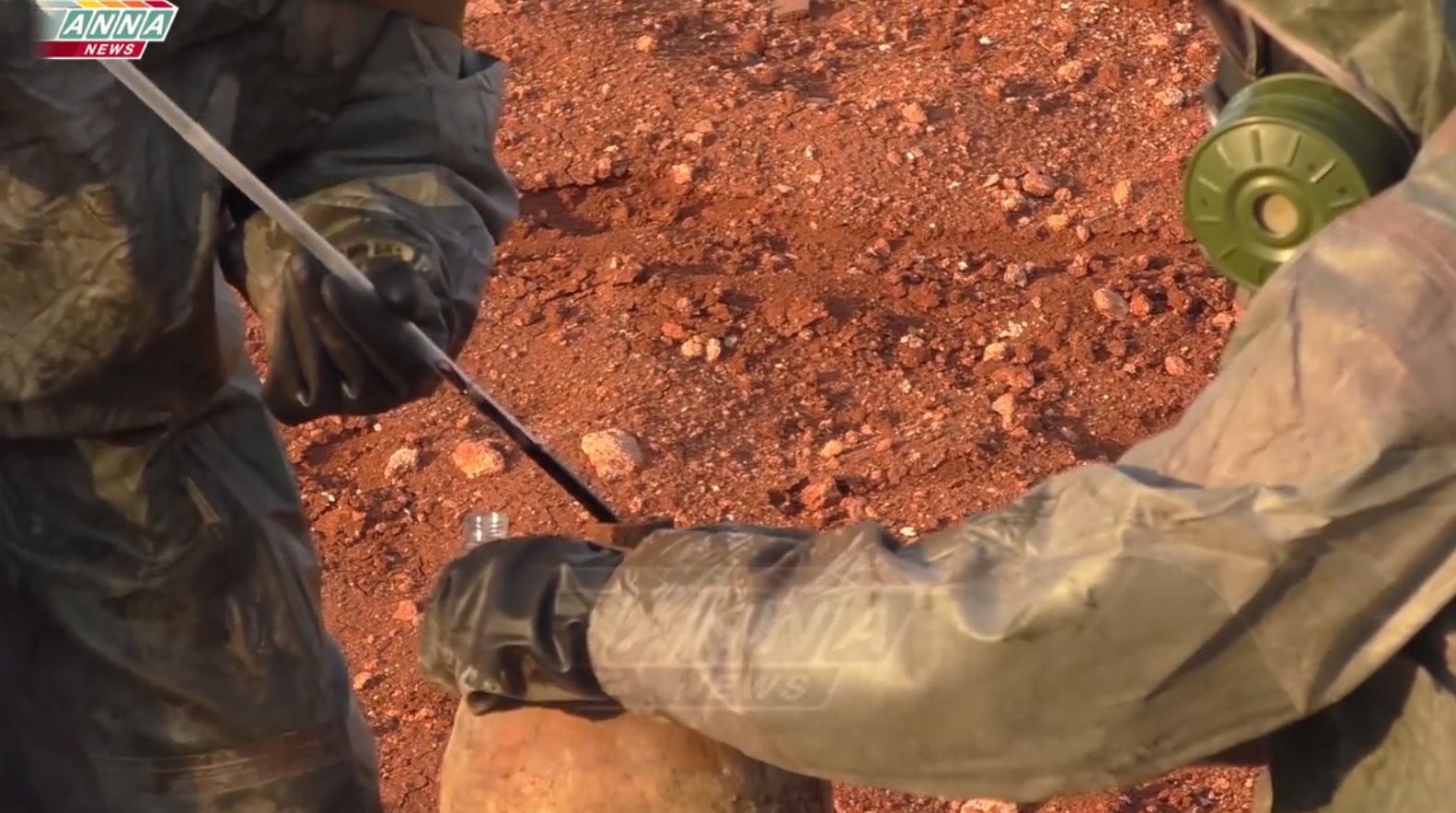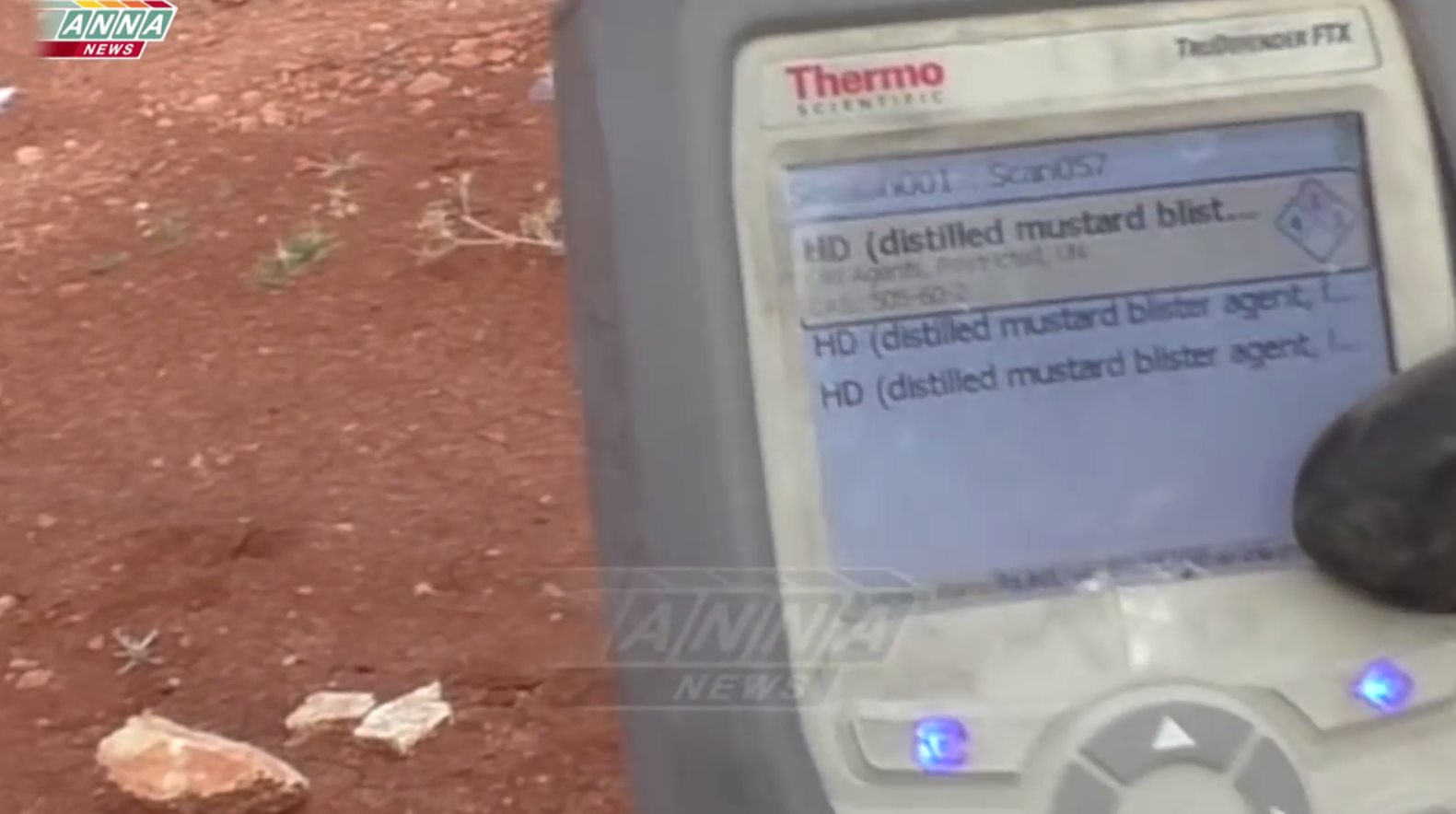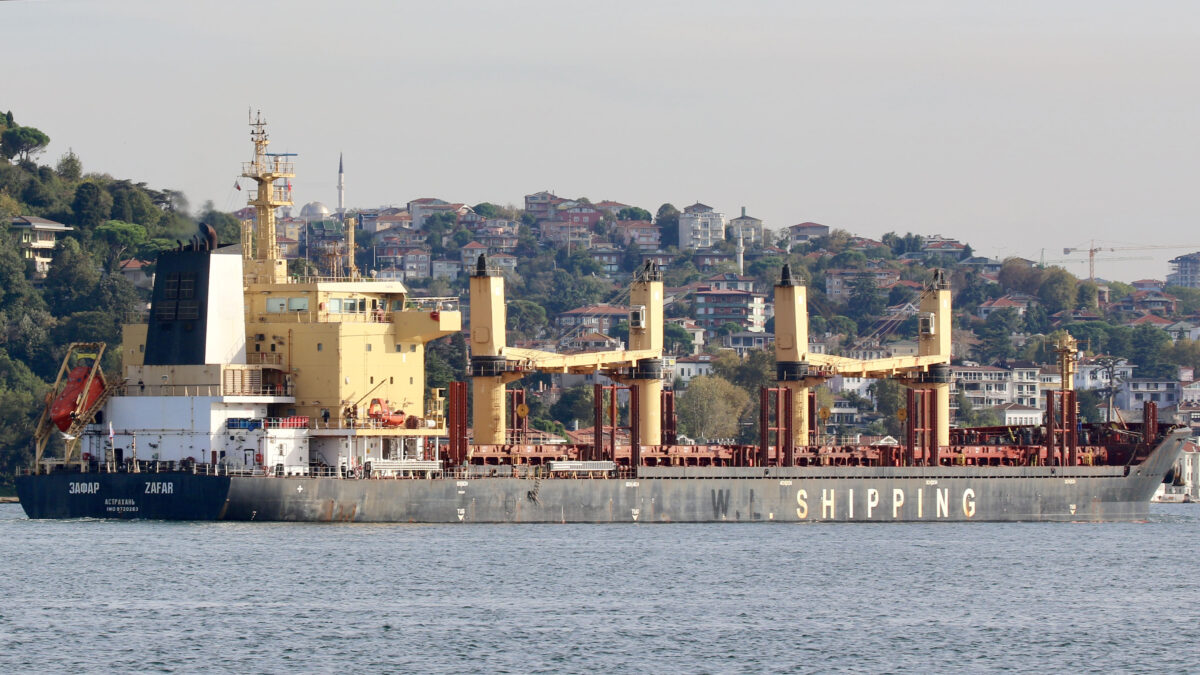Russia's Chemical Weapon Attack Investigation in Syria
Throughout the conflict in Syria different sides in the conflict have traded accusations of chemical weapon use, with the OPCW/UN stating that both ISIS and the Syrian government have used chemical weapons, mustard gas and chlorine gas respectively. With Russia joining the conflict there has been a renewed interest in the Russian media and among the Russian military about the use of chemical weapons in Syria, with their investigations focused on the use of chemical weapons among its opponents in the conflict.
In recent weeks, one incident in particular has caught the attention of the Russian media and military. On September 16th 2016 reports emerged from the Kurdish village of Umm Hosh, and other locations, of chemical weapon attacks, with initial claims blaming ISIS for the attacks:
(Archive)
ISIS has shelled the Kurdish village of Umm Hosh with mortars filled with chemical gas. pic.twitter.com/bA6t5mDEIa
— Unite Kurdistan (@UniteKurdistan) September 16, 2016
(Archive)
Update #afrin #ISIS attacked Kurdish Vlgs with Chemical weapon, exposed cases can’t breath, N-Syria #TwitterKurds pic.twitter.com/mLsjYmxZHY
— Kovan Direj (@kovandire) September 17, 2016
One of the most interesting elements of the Umm Hosh attack, documented at the time by Bellingcat, was the type of munition used in the attack, a type of mortar bomb used in a previous attack against the rebel held town of Marea a month earlier, also blamed by locals on ISIS. Examples of the munitions from both attacks are shown below:
Prior to this attack the Russian government and media had reported on allegations of chemical weapon attacks by rebel groups, including the use of chlorine and white phosphorus, although it should be noted white phosphorus is generally not regarded as a chemical weapon, with the Convention on Certain Conventional Weapons defining it as an incendiary weapon. Open source evidence of these alleged attacks is extremely limited, so it is impossible to make an assessment about the validity of this claim, especially in light of the Russian government’s repeated attempts at deception in relation to Syria and other conflicts.
However, the Umm Hosh attacks offered a significantly larger amount of open source evidence, and ties to previous attacks. ANNA News followed Russian chemical weapons specialists to Umm Hosh and filmed their investigation:
https://www.youtube.com/watch?v=HfSns7u-dIw
In addition to interviews with victims the specialists were able to recover a mortar bomb that failed to detonate, giving us the first clear view of the munition before it has detonated:
Based on the damage of the mortar bombs used in this attack and the earlier Marea attack, it appears the front of the mortar bomb has been designed to detach, either through impact or with a burster charge. One video from the Marea attack features what appears to be the front of one of the mortar bombs used, just to the right of the crater:
Later in the video the munition is opened and a sample is removed, a black viscous liquid:
The liquid is tested, giving a result for HD (distilled mustard blister agent):
This black liquid is notable as similar liquid was found at not only the August 2016 attack on Marea, but also in an August 2015 attack on Marea, also blamed on ISIS, where artillery shells were used instead of mortar bombs. The image below shows the artillery shell from the August 2015 attack on the left, and the substance filmed at the site of the August 2016 attack on the right: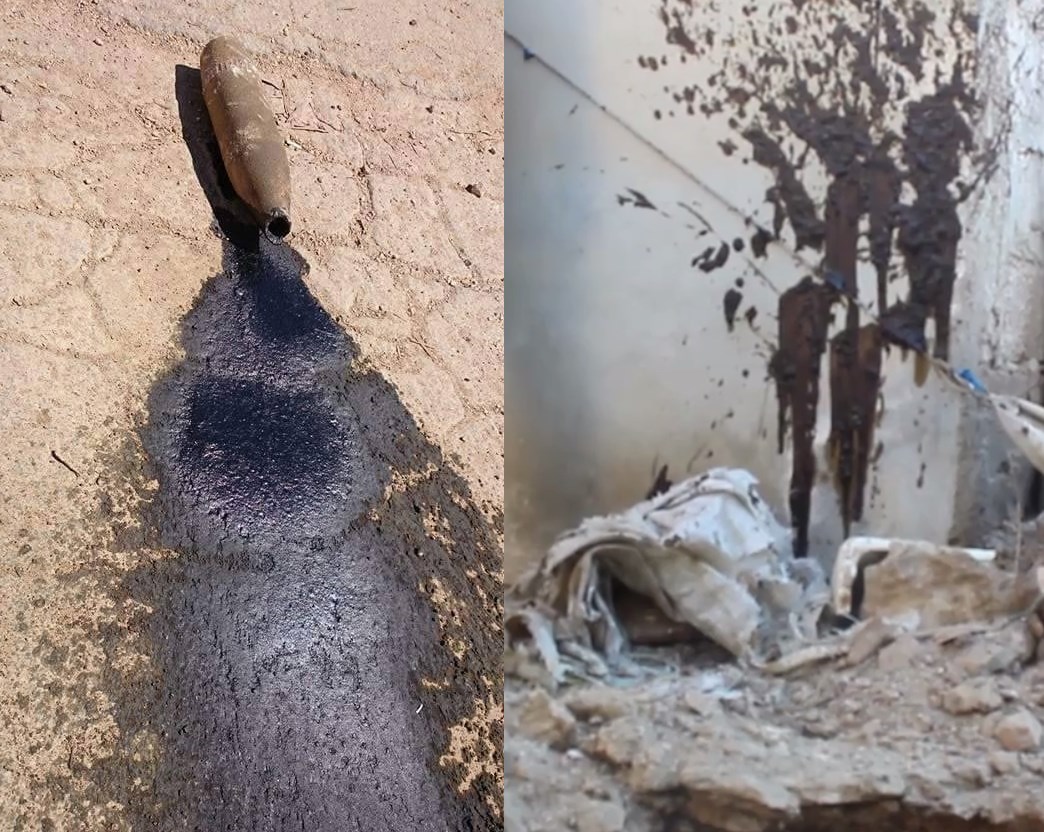
Later news coverage included the Russian chemical experts presenting their findings:
https://www.youtube.com/watch?v=tNOBdHspXdQ
They state that the mortar bomb had a calibre of 240mm, and that the mortar bomb was manufactured by the group using it, although they do not name the group, with the attack only being described as fighters attacking civilians. It’s notable in much of the Russian media coverage of this incident the identity of the group responsible is not specified, despite claims of ISIS involvement made at the time of the attack.
While the Russian Ministry of Defence isn’t particularly reliable when it comes to accurately reporting information, the above videos still provide additional information about the use of chemical weapons by ISIS. The recovery of a complete munition is significant, as it confirms, to a certain extent, how the munitions function, as well as their fill being the black substance identified in other attacks linked to ISIS. Although mustard gas (a misnomer, as it’s actually a liquid) is usually not a black liquid, it cannot be discounted the liquid recovered is a mixture of substances. Based on the injuries presented by victims of the attack it seems likely the substance is a form of mustard gas, and the Russian analysis would support this conclusion.
The open source material and Russian investigation supports the OPCW/UN allegations of chemical weapon use by ISIS, with the big question now remaining of where is ISIS getting their chemical agents from?
